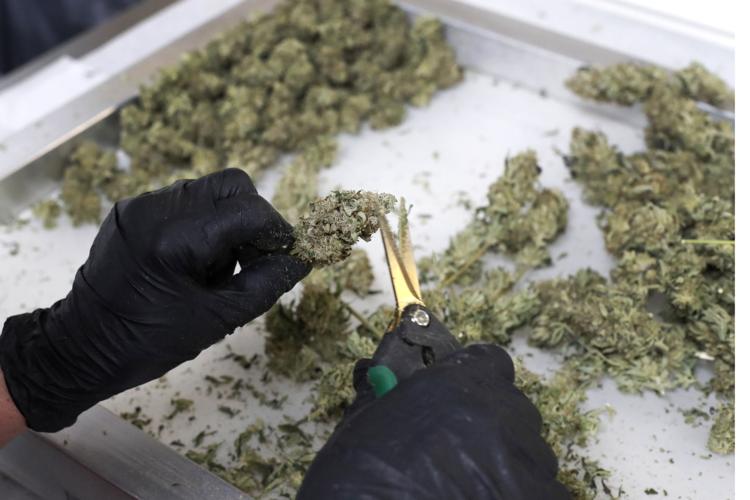More than $300 million in legal weed sold in Illinois so far this year

In this Tuesday, Jan. 14, 2020, photo, the cannabis flower is trimmed at Revolution Global’s cannabis cultivation center in Delavan, Illinois.
(The Center Square) – Consumers bought more than $300 million worth of legal cannabis for recreational use in Illinois in the first seven months of the year after July sales exceeded previous months by as much as $20 million.
The Illinois Department of Financial and Professional Regulation reported in July a total of nearly $61 million in recreational cannabis products were sold. That’s $13.3 million more than was sold in June and $16 million more than was sold in May. When sales first started in January, there was a total of $39.2 million for the month. The amount sold dropped the following three months but began increasing again in May and June.
For July, there were more than 1.2 million cannabis items sold worth $44.7 million for in-state residents and $16.2 million sold to out-of-state residents.
For the calendar year, total sales reached $300.1 million. That total does not include the taxes the state generates from the sale of adult-use cannabis. That can be up to 40-plus percent, depending on the potency of the product.
The latest revenue figures from the Illinois Department of Revenue show for adult-use cannabis taxes, the state generated $52.8 million from January through the end of June, which completed the fiscal year 2020. Figures for July adult-use cannabis taxes were not immediately available.
The tax revenue is split among a number of different funds, with 35 percent going to the state’s general revenue fund. A quarter of every tax dollar generated from recreational cannabis will go to the newly created Restore, Reinvest and Renew Program, which fund programs in communities that have been affected by violence, excessive incarceration and economic disinvestment. The grants help fund programs in areas such as civil legal aid, economic development, reentry, violence prevention and youth development, according to the program’s website.
The rest of the tax money is divided up with 20 percent going to substance abuse and mental health services, 10 percent to the state’s backlog of unpaid bills, 8 percent to local law enforcement and 2 percent for public cannabis education and safety campaigns.
Beginning July 1, municipalities that approved a local sales tax could tack up to 3 percent in recreational cannabis taxes to spend as they see fit. In Springfield, for example, part of the revenue will go to police and fire pension funds.

